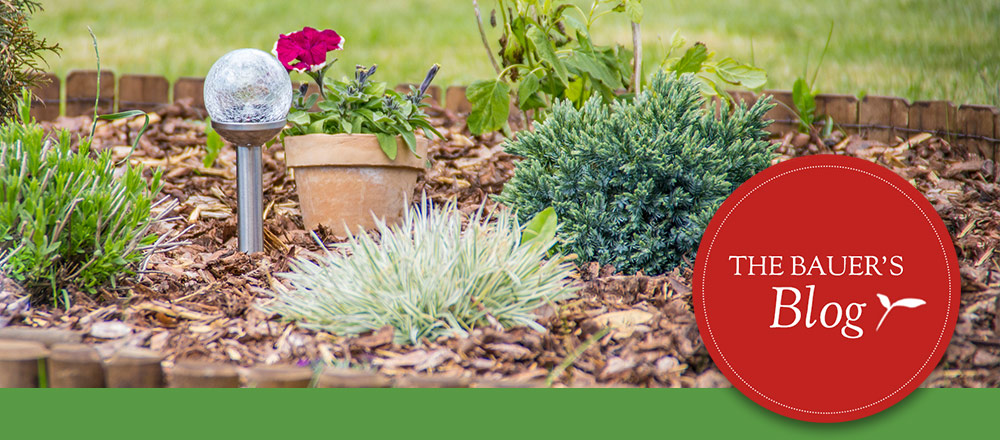Starting your garden from seeds is one of those activities in which everyone wins. You’ll save money while you work on growing food (and flowers) from scratch, it’s good for your health, and we like to think of it as an important way to reconnect with our space at home and outside. Whether you’re looking for healthy food you have confidence in, a fun learning activity with the kids, a cheaper solution to healthy eating, or just a way to make the most out of a few device-free minutes, growing seeds lets you see big rewards stemming from the simplest and smallest of places.

Why Grow Plants From Seeds?
It might be easier to ask – why not? We’re seeing some big shifts in the gardening world that have changed how we look at gardening. While flowers never go out of fashion, gardening is slowly returning to its roots. These days, it’s all about the satisfaction of growing and getting a taste of home-grown food. Growing your produce at home is a great way to take advantage of the opportunities waiting for you in your garden, and growing plants from seed is a surprisingly simple place to start.

Starting Plants From Seed – Our Favorite Reasons:
There are tons of reasons to start growing your own food from scratch. We love starting some of our produce favorites straight from seed for our containers and gardens, and here’s why:
Health – Growing your own food has a long list of obvious benefits! As soon as produce is picked it starts to lose its nutritional punch, so the closer you are to the source, the better nutrients you’ll get. If you’re taking food for your dinner straight from the garden, you get the very most of what your plants have to offer. You’ll also appreciate the confidence you’ll get from growing your plants from seed because you’ll know everything that went into your plant from the beginning.
Flavor – Homegrown food packs more nutrition per bite but it also tastes better! Place store-bought produce next to your home-grown veggies and we promise you’ll be able to taste the difference. The best way to start a garden that tastes amazing is straight from the seed.
Savings – Growing your own food is an easy way to save money at the grocery store. While you’ll be trading extra dollars for extra effort, there’s also a lot more value in the time we spend in the garden. Seeds are cheap, easy to grow, and give you the same delicious results with more freshness and nutritional value than buying from the grocery store.
Family – Your family will love the benefit of tastier and healthier food. Even though everyone will reap all of the benefits of tasty and affordable produce, the best benefit of starting plants from seed is the learning opportunities you’ll have with the young children in your family! There are so many lessons about life hiding each tiny seed, and you’ll be fostering good habits and hobbies with your kids by including them in your gardening. Some experiences simply can’t be bought.

The Best Way To Start Seeds Indoors:
Some plants are hardy enough that they can be planted right in our gardens once everything thaws. The best choices for outdoor sowing are peas, carrots, beans, and leafy greens.
In contrast, some of our garden veggies need things to be a bit warmer, so they’ll do best if they’re started in containers inside. Heat lovers, like peppers and tomatoes, are popular garden choices that need an indoor head-start on the season due to our narrower window of warm weather. It’s also nice having a few little green sprouts growing on our window sills before the spring weather has fully bloomed.
Here’s how to grow seeds indoors at home, for those garden vegetables that need a leg up:
- Wash your containers well before you start – The best way to start your seeds indoors is in a sterile environment where they won’t have to fight off germs and fungi right away. Use bagged potting soil to help start things off right.
- Pick a location – Your seeds won’t need any special lighting, but once they sprout, they’ll need lots of bright light to fuel their growth spurt.
- Maximize humidity to convince the seeds to germinate – Use a clear, plastic dome to make a makeshift greenhouse. Once leaves break the surface, they won’t need the dome anymore.
- The first leaves are formed by the nutrients in the seed – Once the roots have set enough to start pulling nutrition from the soil, real leaves will develop. At the very earliest, you’ll need to wait until these “true leaves” develop before you transplant your seedling.
Be gentle when watering your seeds and seedlings – Heavy, overhead streams of water can wash them away. Use a fine mist for the first few waterings to mimic something like light rain.
Once you’ve gotten your seedlings to sprout indoors, they are ready to move to the garden where they can get to work growing this year’s delicious harvest. Growing your produce from scratch is incredibly rewarding, especially when you know you nurtured it from next to nothing. There’s no feeling like watching those tiny seeds grow into nourishing plants that bring your garden – and your table! – to life.







Leave A Comment